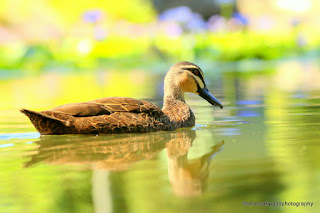Dingo
 The Dingo is Australia's wild dog. It was probably introduced to Australia by Asian seafarers about 4,000 years ago. Its origins have been traced back to a south Asian variety of Grey Wolf . Recent DNA studies suggest that Dingoes may have been in Australia even longer (between 4,640-18,1000 years; Oskarsson et al 2011), however, the earliest undisputed archaeological finding of the Dingo in Australia has been dated to 3,500 years ago.
The Dingo is Australia's wild dog. It was probably introduced to Australia by Asian seafarers about 4,000 years ago. Its origins have been traced back to a south Asian variety of Grey Wolf . Recent DNA studies suggest that Dingoes may have been in Australia even longer (between 4,640-18,1000 years; Oskarsson et al 2011), however, the earliest undisputed archaeological finding of the Dingo in Australia has been dated to 3,500 years ago. Identification
Its dog-like appearance with a relatively broad head and erect ears, makes the Dingo Australia's largest mammal carnivore. With canine teeth longer than those of a domestic dog, the dingo's muzzle is also longer and tapered.
Size range
Shoulder height: 440-620mm, Body length: 860-1230mm, Tail: 260-380mm, Body mass: 12-24kg.
Distribution
Having been in Australia for over 4,000 years, Dingoes inhabited many parts of mainland Australia but never became established in Tasmania. After European colonisation and the growth of pastoralisation, there was a concerted effort to remove Dingoes from farming areas. As a result, Dingoes are mostly absent from many parts of New South Wales, Victoria, the south-eastern third of South Australia and from the southern-most tip of Western Australia.Dingoes are regarded as common throughout the remainder of Australia except in the arid eastern half of Western Australia, nearby parts of South Australia and the Northern Territory.
information sourced from Australian Museum



Comments
Post a Comment